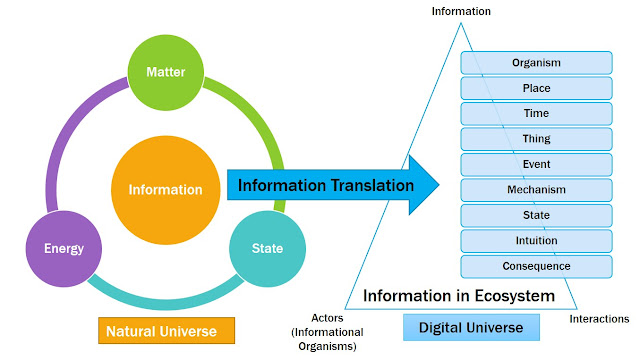Scalable Enterprise AI: Thinking, Architecting and Building (TAB) Intelligent Software Systems
Intelligent Software System
Artificial intelligence (AI) systems seem to replicate or mimic or augment human capabilities. There is an increasing interest in adopting such intelligent software systems for automation, decision-making, and recommendations etc.
The Challenge
Isolated or individual AI applications, models, proof-of-concepts (PoCs) and protype developments often fail to integrate with or scale at the enterprise level as production ready enterprise systems. This draws our attention to the following key questions:
- How would applications and models share data with each other?
- How can we ensure that the models have controlled access to the right data based on their permission or need to know basis?
- How can we avoid vendor lock-in where enterprises depend on different agents developed or provided by different service providers across the heterogeneous multi-cloud and on premises computing environment?
- How can we ensure communication and coordination across such heterogeneous multi-agent AI systems?
- How can we orchestrate, operate and manage such multi-agent environment at the enterprise and federated ecosystem levels?
Why Agents alone are Not Enough?
There is lot of hype about using agentic AI or multi-agent oriented approaches for architecting and building intelligent software systems. However, agents alone are not enough. Further, individual and isolated agentic applications and models may face challenges when it comes to their deployment and integration at the enterprise scale across multi-cloud and multi-vendor platforms.
An Integrated Approach
This article discusses the following human-centric and value proposition oriented (VPO) integrated approach to Thinking, Architecting and Building (TAB) intelligent software systems at a scale.
Figure 1. Thinking, Architecting and Building (TAB) Intelligent Software Systems (Gill 2025)
Thinking:
Before architecting and building, we need to establish the understanding of the human systems and underlying thinking. Thus, the proposed TAB approach incorporates the human first or human system thinking approach, which has been explained in the article title: "Trimodal Thinking for Architecting Human-Centric AI Systems: Fast, Slow, and Control. (Gill 2025). Trimodal thinking extended the existing well-established dual system thinking approach, fast (system 1:intuitive) and slow (system 2:rational), from the well-known book, published by Daniel Kahneman. The intuitive and rational thinking systems are useful as a conceptual foundation for architecting the AI software system. However, the Trimodal thinking proposes the inclusion of the a system 3:control to connect, observe, and switch the control between these two systems for creating a balanced thinking or intelligence avoiding any system 1 or system 2 biases.
See the following article for details:
https://ieeexplore.ieee.org/abstract/document/10938407
https://ieeexplore.ieee.org/abstract/document/10938407
Architecting:
Human-centric Trimodal thinking can be translated into the value proposition oriented (VPO) architecture (Gill 2016). It is not about agents or services or data, rather it brings together these three core elements to architecting human-centric and value-proposition. This incorporates elements of agent-oriented architecture (AOA), service-oriented architecture (SOA) and data-oriented architecture (DOA). Further, it is not about sinking in the architecture models or analysis paralysis. It is about addressing stakeholder (humans) concerns by architecting and building the next value proposition or intelligence capabilities with a view to not only mimic but also to augment the human system capabilities and needs (e.g. automation, decision-making). Here, we can identify and architect agents to support human system 1: intuitions, system 2: rational behaviors and also system 3: control agents for the multi-agent system and related communication, coordination, orchestration, workflows etc. Agents have short or long term memory and can use models, tools, services (including events, microservice and APIs) and data objects (e.g. documents, including information and knowledge).
Building:
Finally architecture can be translated for building the intelligent software systems using the relevant technologies. rather an individual agentic application or AI model, this takes the integrated intelligent software systems approach. Based on the C4 Model, this can include different intelligent software systems, where each software system has containers. A container could be an application, data or algorithm. Further, each container is composed of components and underlying actual code. For instance, a software application in an intelligent software system can be composed of agents, services and APIs. A data container can contain data objects. An algorithm can be composed of inputs, models and outputs.
Conclusion:
Overall, this article intends to provide a traceable and end-to-end human systems to intelligent software systems approach. This incorporates human-centric Trimodal thinking, and architecting and building VPO, AOA, SOA and DOA intelligent software systems.
References:
- Gill, A. Q. (2025). Agile System Development Lifecycle for AI Systems: Decision Architecture. arXiv preprint arXiv:2501.09434.
- Gill, A. Q. (2025). Trimodal Thinking for Architecting Human-Centric AI Systems: Fast, Slow, and Control. IEEE Transactions on Technology and Society. https://ieeexplore.ieee.org/abstract/document/10938407
- Gill, A.Q. (2016).Customer-centric and Actionable Value Proposition Oriented (VPO) Adaptive Enterprise Architecture (EA). https://aqgill.blogspot.com/2016/12/customer-centric-and-actionable-value.html
- Kahneman, D. (2011). Thinking, fast and slow. Penguin Books.
- C4 Model. The C4 model for visualizing software architecture. Available: https://c4model.com/
- Inclusion Cloud (2025).Event-Driven Architecture: Transforming IT Resilience. https://inclusioncloud.com/insights/blog/event-driven-architecture-guide/
- Agent Oriented Architecture (AOA): https://lnkd.in/gH6KF6-E.
- Service Oriented Architecture (SOA): https://lnkd.in/gvm3Yp_y
- Data Oriented Architecture (DOA): https://lnkd.in/g5c66vte




Nice Post!!
ReplyDeletePlease Look Here At - In today’s dynamic financial environment, Capital Asset Valuation Australia plays a pivotal role in helping businesses, investors, and property owners make well-informed decisions. Whether you're acquiring new equipment, preparing for taxation, or managing your asset portfolio, knowing the true value of your capital assets is essential. This strategic insight empowers accurate reporting, smarter budgeting, and long-term profitability.
If you're looking for the best decision-making platform, Corestrat's Decision Intelligence Software is unparalleled. It is dependable, efficient, and improves strategic planning seamlessly.
ReplyDeleteBest decision intelligence software